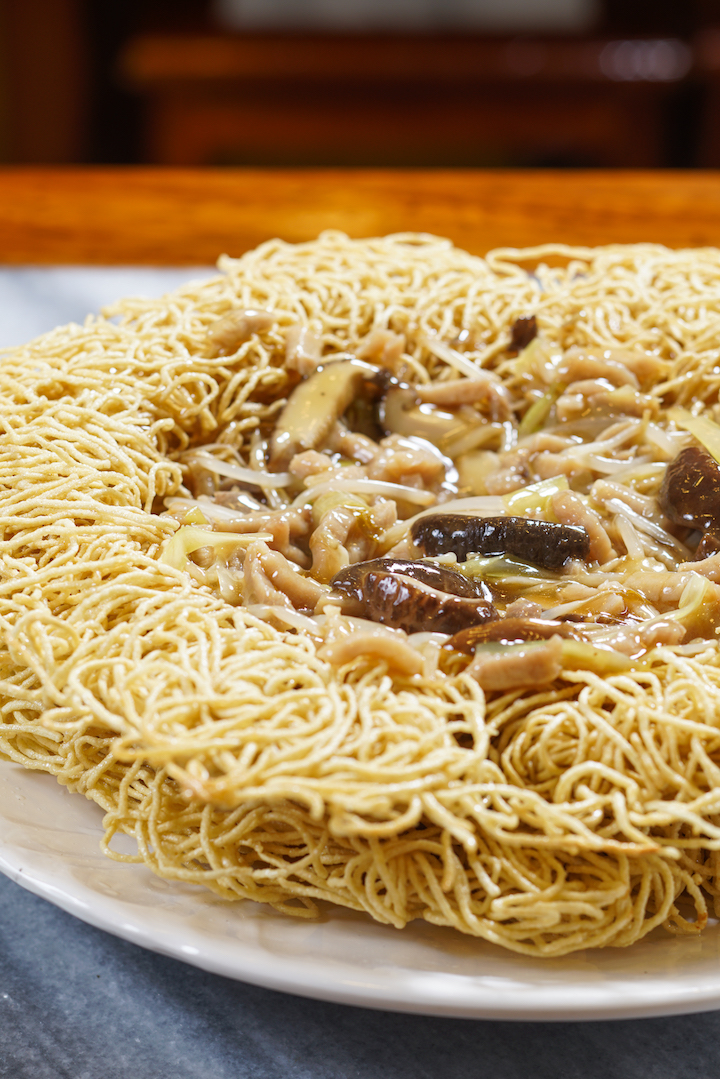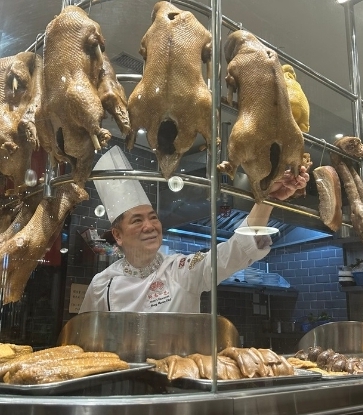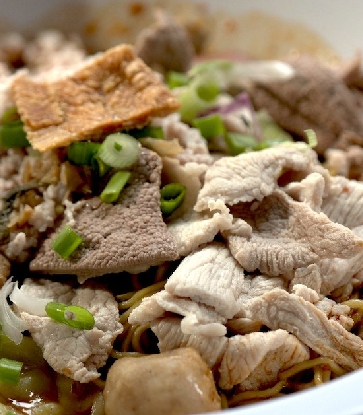Wonton noodles is one of the undisputed emblems of Hong Kong food. While it can be found practically anywhere in town, only a tiny fraction of shops follow the original recipe in making the noodles, which requires the dough to be kneaded with a bamboo pole.
To replicate the time-honoured taste, make your way to Kwan Kee Bamboo Noodles. The eatery doesn’t have an eminent history to show off, opening late in 2010. Yet, its quality was quickly recognised, as it has been highlighted as a Bib Gourmet Restaurant for five consecutive years.
Hailing from Guangzhou, the birthplace of wonton noodles, Kwan Kee’s owner Lee Sai-Leung recalled that his bond with the dish goes all the way back to his grandfather’s generation.
“My grandfather made a business from selling wonton noodles in Macau. As a street hawker, whenever there was an order, he would lay down the equipment on a carrying pole and cook on the roadside, before bringing the noodles to the client’s apartment,” Lee said, “In the past, the noodle-makers in Guangzhou actually went to the patron’s home to prepare the noodles from scratch. They would bring along ingredients including flour and duck egg, sitting on a pole and jumping up and down to knead the dough. Sometimes they could 20 catties of noodles at once.”

Lee’s grandfather recorded his recipes in a notebook with detailed descriptions and tips on making a perfect bowl of wonton noodles. To Lee, this document is a family legacy that makes up the foundation of Kwan Kee. Based on this knowledge passed on from 120 years ago, Lee took on an extensive experiment to update the ingredients and technique.
The noodles he makes are freshly made every day in a small workshop inside the restaurant. Through the glass window, diners can witness the entire preparation process, from the formation of the dough to cutting it into noodles of various sizes. The most impressive of all, of course, is to see the masters eloquently manoeuvre the log, giving the noodles its distinctive characteristics. Unlike the sharp yellow colour of noodles found in average noodle shops, Lee’s product has a natural hue of pale beige. From a humble trinity of flour, egg and lye water, he pulls off something brilliant.

The type of flour used is a deciding factor in the noodles’ texture, for which Kwan Kee developed a golden formula which combines flours of different strengths. In addition, according to Lee, the quality and amount of lye water also play a part. Of course, dough-kneading through the bamboo pole is not just a crowd-pleaser. It is the most crucial step that even machines can’t replicate.
“It takes 25 minutes of kneading on the pole for every 20 catties of noodles, so they will have a wonderful chew after cooked,” Lee said. Adding this to the control of temperature, humidity and resting time (to let the taste of lye water disappear), the entire preparation process is the proof of care and experience of the noodle-maker.

Those ready for advanced noodle nirvana can choose the shop’s signature lo mein with oyster sauce and home-fried shrimp roe. The seafood-based condiments yield intense flavours. Fried noodles with sliced pork is an outside-the-box option. The Cantonese-style noodles are cooked Teochew style - pan-fried till crispy and has a pancake-like consistency to soak up all the luscious sauce.

As to being highlighted in the Michelin Guide, Lee sees it as a motivation rather than source of stress.
“Our shop is still young, but thanks to Bib Gourmand, we are introduced to many diners who wouldn’t have known us otherwise. To me, reputation is never a pressure. All we need is to do our part and maintain the quality of our food,” Lee said.
RELATED: Click here to discover more Bib Gourmand eateries in the MICHELIN Guide Hong Kong




















